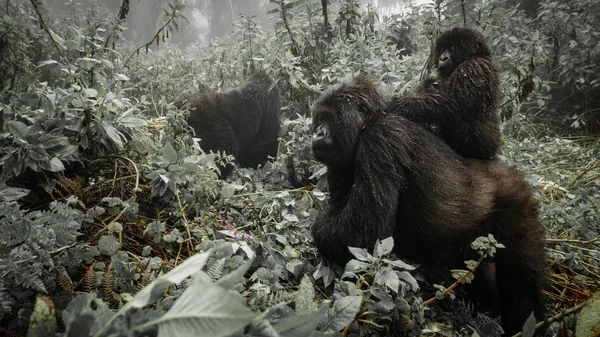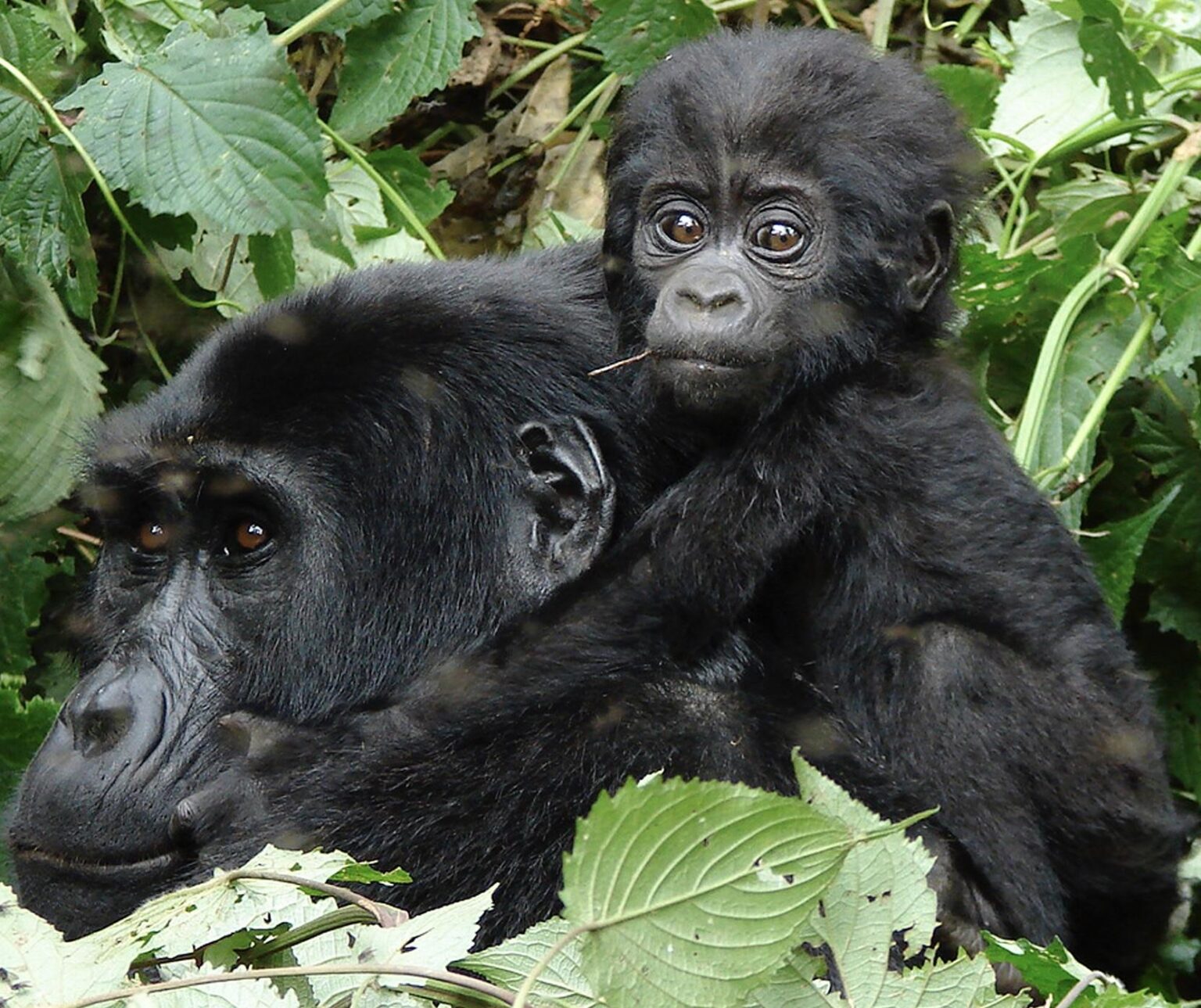Bwindi Impenetrable National Park is the most popular park in Uganda and one of the best places in the world to have a face to face encounter with mountain gorillas. The park is home to half of the remaining population of mountain gorillas in the world.
Bwindi Impenetrable National Park is located in the southwestern part of Uganda, in districts of Kanungu, Kisoro, and Kabale, on the edge of the Albertine Rift, part of the western branch of the East African Rift. The park covers an area of approximately 321 square kilometers, at an altitude ranging from 1,160 meters to 2,607 meters above sea level.

Mountain gorillas are the major tourist attraction in Bwindi Impenetrable National Park, with about 491 individuals and about 20 habituated gorilla families open for tourism.
History of Bwindi Impenetrable National Park
Protected one of the oldest rainforests that is believed to have existed for over 25,000 years, Bwindi Impenetrable National Park is also one of the oldest national parks in Africa.
The history of Bwindi Impenetrable National Park dates back to 1964 when the area was turned into a wildlife sanctuary. Later in 1992, it was gazetted a national park purposely to protect the endangered mountain gorillas.
Initially, Bwindi was made up of three reserves: Impenetrable Central Forest Reserve, Mgahinga Gorilla Reserve, and Rwenzori Mountains Reserve, covering an area of 321 square kilometers. In 1993, the area was declared a national park. The park was initially managed by Uganda National Park which was turned into Uganda Wildlife Authority.
In April 1993, the park was opened for gorilla trekking with the opening of the first ever habituated gorilla family in Uganda – Mubare Gorilla Family.
History of Bwindi Impenetrable National Park throughout the years.
1932
In 1932, the two blocks of Bwindi Impenetrable Forest were designated as Crown Forest Reserves. The Northern block was designated as the “Kayonza Crown Reserve,” and the Southern block designated as the “Kasatora Crown Forest Reserve.” These reserves had a combined area of 207 square kilometers (80 square miles). In 1942, the two Crown Forest Reserve were combined and enlarged, and renamed the Impenetrable Central Crown Forest. This new protected area covered an area of 298 square kilometers (115 sq mi) and was up under a joint control of the Uganda government’s game and forest departments.
Bwindi Impenetrable Forest Reserve was set up in 1942 before it was later gazetted as a national park in 1992.
1964
In order to protect the endangered mountain gorillas whose number was greatly decreasing, the area was turned into an animal sanctuary and renamed the Impenetrable Central Reserve. In 1966, two other forest reserves became part of the main reserve, increasing its area to almost 321square kilometers. The area continue to be managed as both a game sanctuary and forest reserve.
1991
Along with the Mgahinga Gorilla Reserve and the Rwenzori Mountains Reserve, the Impenetrable Central Forest Reserve was designated as a national park and named “Bwindi Impenetrable National Park” covering an area of 330.8 square kilometers.
The area gained a status of a national park purposely to protect the endangered mountain gorillas and the upgrade largely impacted the Batwa Pygmy people, who were evicted from the forest and no longer permitted to enter the park or access its resources.
Gorilla trekking because a tourist activity in April 1993, and since then, the park became a popular tourist destination. In 1994, a 10-square kilometer was incorporated into the park.
1993
Due to the existence of almost half of the world’s mountain gorillas, the parks management – the Uganda National Park which later turned into Uganda Wildlife Authority extended the boundaries of the park by purchasing a piece of land from the Batwa People – the keepers of the forest that stretched approximately 4 square kilometers.
In 1994, Bwindi Impenetrable National Park was inscribed on the World Heritage List.
1999
The year 1999 is the hardest time in the history of Bwindi Impenetrable National Park, a force of 100 – 150 former Rwandan Interahamwe guerrillas infiltrated across the border from the Democratic Republic of Congo and kidnapped 14 foreign tourists and their Ugandan guide from the park headquarters, eventually releasing 6 and murdering the remaining 8 with machetes and clubs. Several victims were reportedly tortured, one of the female victims was raped, and the Ugandan guide was doused with gasoline and lit on fire. The Interhamwe attack was reportedly intended to “destabilize Uganda” and frighten away tourists from the park.
As a result, the park was forced to close for several months and the popularity of the gorilla tours suffered badly for several years, though attendance has since recovered due to greater stability in the area. Also, tourists on a gorilla trekking in Bwindi Forest are accompanied by an armed guard.

Bwindi Impenetrable National Park Today
Today, Bwindi Impenetrable National Park is ranked among the best gorilla trekking destination in the world and home to the largest population of mountain gorillas in the world.
